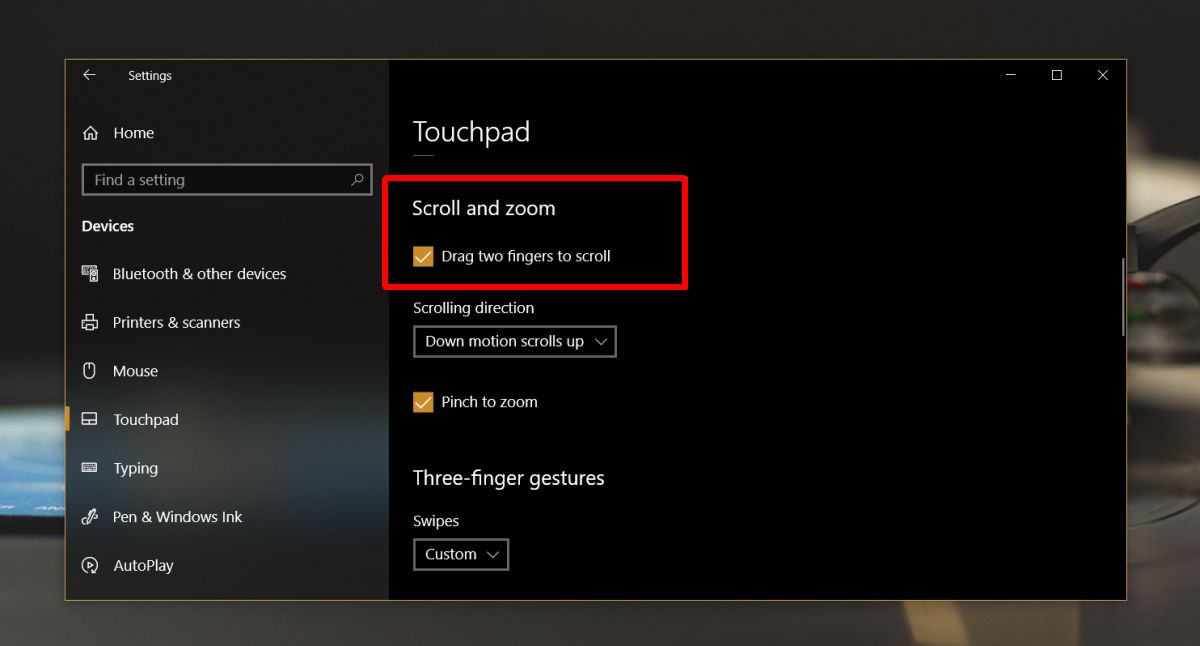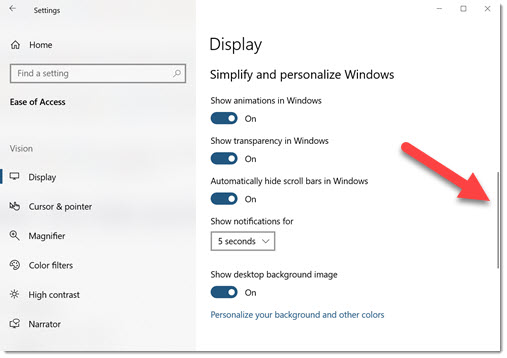
The option is located at the following location: Windows 10 > Settings > Ease of Access > Display > Automatically hide scroll bars in Windows

Microsoft has added a dedicated toggle to disable the scroll bars auto-hide system in the accessibility settings page, so it goes without saying that many might actually have a hard time finding it. In this case, disabling this feature is pretty much the only way to go.įortunately, Windows 10’s making the whole thing pretty straightforward, despite the option itself not being stored in a place where you’d actually expect to find it. And of course, you can always scroll with the mouse wheel or using the gestures configured for your touchpad in Windows 10.īut on the other hand, it’s no surprise that not everyone likes this approach, and it happens for a good reason.įor example, people working with large documents where they need to scroll a lot, either vertically or horizontally, would actually find automatically hiding scroll bars less convenient, especially for the latter.

I didn’t try, my problem was solved with the steps documented above.Windows 10 comes with a new behavior that automatically hides the scroll bars in modern apps, thus using the available screen estate in the most efficient manner.īy hiding the scroll bars, Windows 10 thus makes sure that more space on the screen is used for displaying your content when using a modern app.Īnd at the same time, this approach is pretty easy to get used to, as the scroll bars show up on mouse hover.

It did not happen in the browser unless I hovered over a section that had a custom scroll type listener. Like when opening the run command dialog, or when hovering over the Premiere Pro timeline. I installed Adobe Premiere Pro and then all of a sudden my mouse starting automatically scrolling.


 0 kommentar(er)
0 kommentar(er)
